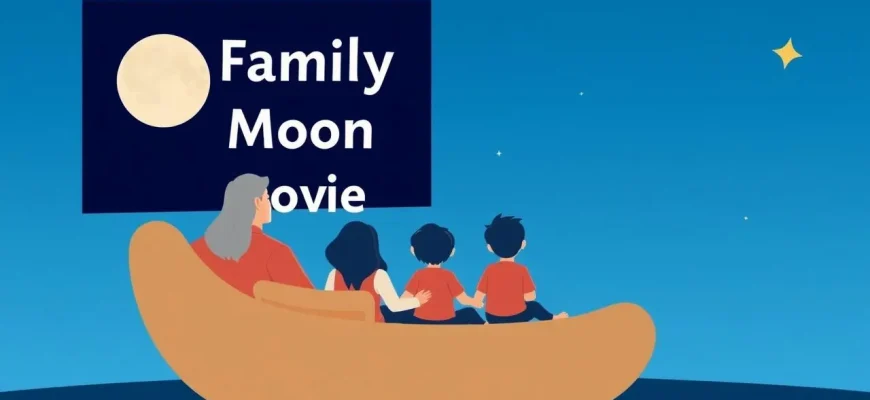The moon has always captivated the human imagination, serving as a backdrop for countless stories, myths, and dreams. This collection of family-friendly films explores the moon in various ways, from whimsical adventures to educational journeys. These movies are not only entertaining but also provide a wonderful opportunity for families to bond over shared cinematic experiences, learn about space, and ignite the spark of curiosity about the universe. Whether it's a tale of lunar exploration or a fantastical journey, these films are sure to enchant viewers of all ages.

Fly Me to the Moon (2008)
Description: This animated adventure follows three young houseflies who stow away on the Apollo 11 mission to the moon, offering a unique perspective on the historic event through the eyes of these tiny stowaways.
Fact: The film was inspired by the real-life story of the Apollo 11 mission, and it features the voices of Christopher Lloyd and Tim Curry.
 30 Days Free
30 Days Free 
The First Men in the Moon (2010)
Description: A modern adaptation of H.G. Wells' classic, this film tells the story of an inventor and his companions who travel to the moon in a spaceship powered by an anti-gravity substance, encountering strange lunar inhabitants.
Fact: This film was produced by the BBC as part of their "Classic Tales" series, bringing Wells' vision to life with updated special effects.
 30 Days Free
30 Days Free 
The Adventures of Tintin: Destination Moon (1959)
Description: While not a film in the traditional sense, this animated adaptation of Hergé's comic book series follows Tintin and his friends as they embark on a mission to the moon, showcasing the adventure and intrigue of space travel.
Fact: The original comic book was published in 1953, and this adaptation was one of the first to bring Tintin's lunar adventures to the screen.
 30 Days Free
30 Days Free 
Wallace & Gromit: A Grand Day Out (1989)
Description: In this stop-motion animated short, Wallace and his dog Gromit take a trip to the moon in their homemade rocket, looking for cheese, only to find a robot instead.
Fact: This was the first film in the Wallace & Gromit series, and it introduced the world to the quirky inventor and his loyal dog.
 30 Days Free
30 Days Free 
Moonshot (2009)
Description: This documentary follows the Apollo 11 mission, focusing on the personal stories of the astronauts and the behind-the-scenes efforts to achieve the moon landing, making it an educational and inspiring watch for families.
Fact: The film includes interviews with astronauts Buzz Aldrin and Michael Collins, providing firsthand accounts of their lunar experience.
 30 Days Free
30 Days Free 
The Astronaut Farmer (2006)
Description: A family drama about a farmer who builds a rocket in his barn to fulfill his dream of going to the moon, showcasing the power of dreams and determination.
Fact: The film was inspired by real-life stories of individuals who attempted to build their own spacecraft.
 30 Days Free
30 Days Free 
The Magic School Bus: Gets Lost in Space (1994)
Description: Ms. Frizzle takes her class on an educational trip to the moon, where they learn about space travel, lunar geology, and the importance of teamwork.
Fact: This episode was part of the popular educational series, which has been praised for making science fun and accessible for children.
 30 Days Free
30 Days Free 
RocketMan (1997)
Description: A comedic take on space exploration, where an eccentric scientist accidentally joins a mission to Mars, but the moon plays a significant role in their journey.
Fact: The film features a cameo by NASA astronaut Buzz Aldrin, adding a touch of authenticity to the space-themed comedy.
 30 Days Free
30 Days Free 
Space Chimps (2008)
Description: This animated film follows a group of chimps sent on a mission to the moon to rescue a stranded astronaut, blending humor with the wonders of space travel.
Fact: The film was inspired by the real-life experiments involving chimpanzees in space during the early days of space exploration.
 30 Days Free
30 Days Free 
The Dish (2000)
Description: While not directly about the moon, this Australian comedy-drama focuses on the Parkes Observatory's role in broadcasting the Apollo 11 moon landing, highlighting the human side of the historic event.
Fact: The film is based on true events, and the actual Parkes Observatory was used for some of the filming.
 30 Days Free
30 Days Free 








